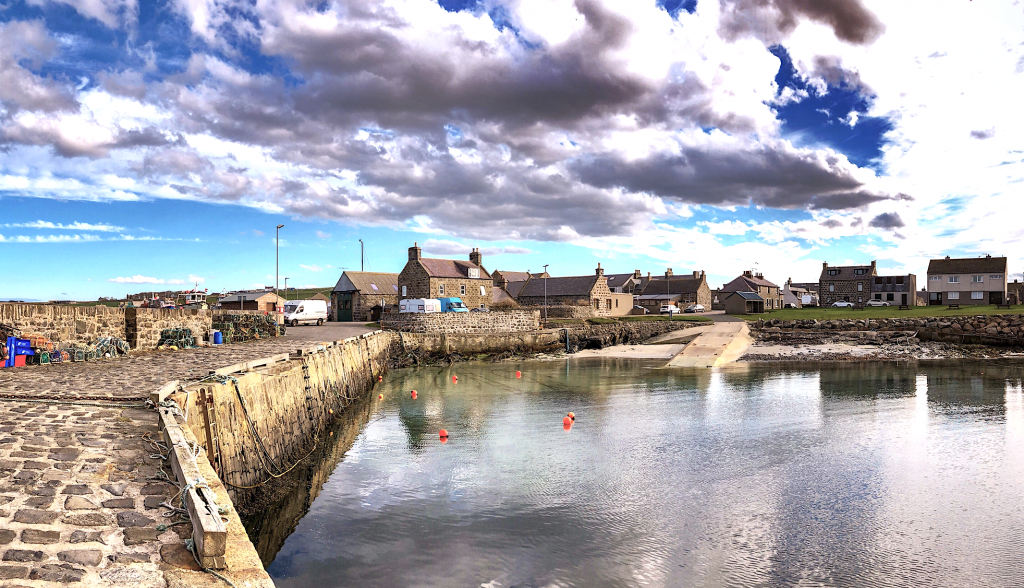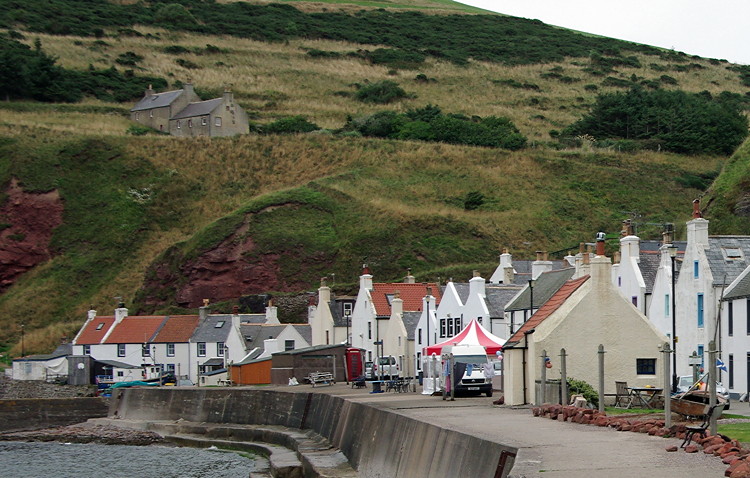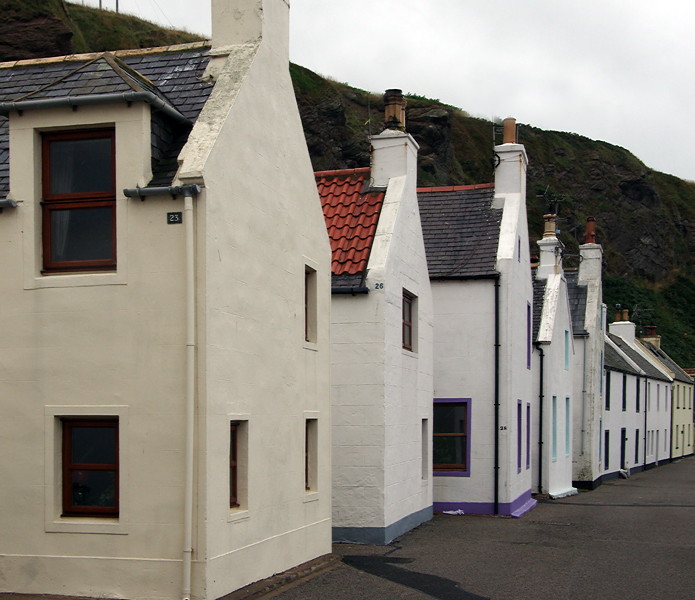The series of small fishing villages along the Fife coast are a popular tourist destination for many, especially those based in Edinburgh. What many people don’t realise is that there are equally as attractive villages on the Moray coast in the north east of Scotland. They get few visitors, but can easily be visited as a day from either Aberdeen or from Inverness.
This just covers the series of small villages, ignoring the town of Fraserburgh, which is still the biggest shellfish port in Europe with a busy commercial harbour.
Many of the settlements were established in the C18th when crofting families cleared from inland estates to make way for their landlord's sheep, were moved to the coast. It is a hostile and rocky coastline and settlement grew up around the mouths of streams where a small harbour could be built. Families fished from boats owned by the landlord. They used lines to catch haddock, whiting and mackerel. By the end of the C19th some fishermen had managed to save enough money to build their own boats. However larger boats appearing in the first half of the C20th were unable to operate out of many of the small harbours and fishing declined rapidly. Now there is little fishing from many of the settlements, apart from some crab and lobster and harbours are full of small pleasure boats.
ROSEHARTY
The first settlement is Roseharty which is thought to have been settled by Danish fishermen in the C13th or C14th, making it one of the oldest of the villages. It is still overlooked by the ruins of the C16th Pitsligo Castle (you need to skoip the ads at the start of the video).
By the C19th, there were 90 fishing boats based here, but when the railway arrived at Fraserburgh, all the fishing moved there.
Roseheary has two harbours. The older and smaller harbour its two piers is to the west and surrounding streets are lined with traditional fishing cottages.

The later harbour to the east is sheltered by single long breakwater and is still used for some fishing.
PENNAN
Pennan is a a small settlement huddled under red sandstone cliffs beneath the plateau behind. The road drops steeply down the cliff to the settlement. There is a small harbour at the mouth of the stream which has cut a deep gorge down through the cliff. This used to be an important fishing harbour, but now it is mainly pleasure boats although there were a few lobster and crab pots around the harbour.
There is just enough space beneath the cliffs for a single row of houses.

These are built with the gable end facing the sea to reduce exposure to the elements.

There is just enough space for the road and narrow grassy area in front of the houses protected by a concrete sea wall. The wire lines are now used to hang out washing rather than nets.
There are many incomers living here. There are several self catering properties, B&B and the Pennan Inn which serves lunches and evening meals. A sign on the wall explains that the film “Local Hero” was shot here.
Locals park along the village street, but there is a small car park at the end of the street by the Village Hall which has very clean public toilets. The new septic tank is here with information boards about the installation and how it works to improve the quality of water being released into the bay and the benefits to marine life.
This just covers the series of small villages, ignoring the town of Fraserburgh, which is still the biggest shellfish port in Europe with a busy commercial harbour.
Many of the settlements were established in the C18th when crofting families cleared from inland estates to make way for their landlord's sheep, were moved to the coast. It is a hostile and rocky coastline and settlement grew up around the mouths of streams where a small harbour could be built. Families fished from boats owned by the landlord. They used lines to catch haddock, whiting and mackerel. By the end of the C19th some fishermen had managed to save enough money to build their own boats. However larger boats appearing in the first half of the C20th were unable to operate out of many of the small harbours and fishing declined rapidly. Now there is little fishing from many of the settlements, apart from some crab and lobster and harbours are full of small pleasure boats.
ROSEHARTY
The first settlement is Roseharty which is thought to have been settled by Danish fishermen in the C13th or C14th, making it one of the oldest of the villages. It is still overlooked by the ruins of the C16th Pitsligo Castle (you need to skoip the ads at the start of the video).
By the C19th, there were 90 fishing boats based here, but when the railway arrived at Fraserburgh, all the fishing moved there.
Roseheary has two harbours. The older and smaller harbour its two piers is to the west and surrounding streets are lined with traditional fishing cottages.
The later harbour to the east is sheltered by single long breakwater and is still used for some fishing.
PENNAN
Pennan is a a small settlement huddled under red sandstone cliffs beneath the plateau behind. The road drops steeply down the cliff to the settlement. There is a small harbour at the mouth of the stream which has cut a deep gorge down through the cliff. This used to be an important fishing harbour, but now it is mainly pleasure boats although there were a few lobster and crab pots around the harbour.
There is just enough space beneath the cliffs for a single row of houses.
These are built with the gable end facing the sea to reduce exposure to the elements.
There is just enough space for the road and narrow grassy area in front of the houses protected by a concrete sea wall. The wire lines are now used to hang out washing rather than nets.
There are many incomers living here. There are several self catering properties, B&B and the Pennan Inn which serves lunches and evening meals. A sign on the wall explains that the film “Local Hero” was shot here.
Locals park along the village street, but there is a small car park at the end of the street by the Village Hall which has very clean public toilets. The new septic tank is here with information boards about the installation and how it works to improve the quality of water being released into the bay and the benefits to marine life.
Last edited:
